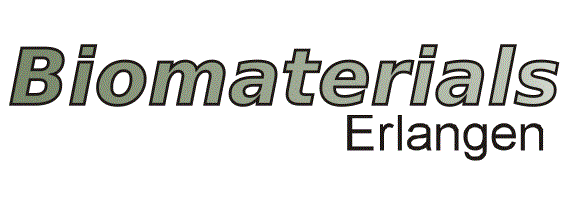Dr. Germán Andrés Clavijo Mejía
Dr. Germán Andrés Clavijo Mejía
Former visiting researcher (FunGlass Centre, Trencin, Slovakia)
Analysis on the cytotoxic, biocompatible, bioactive, and antimicrobial behavior of functionalized radiopaque bioactive glasses and coatings.
Supervisor: Prof. Dr. Aldo R. Boccaccini
The versatility of bioactive glass (BG) 45S5 (45 SiO2, 24.5 Na2O, 24.5 CaO, and 6% P2O5 wt. %), is fundamental to numerous technological advances in healthcare [1]. The modification of this glass by the addition of therapeutic ions (i.e. Sr, B, Zn, Ag) has been used to affect its biocompatibility, bioactivity, antimicrobial and mechanical properties [2]. The opacity x-ray radiation of BGs can be enhanced by the inclusion of heavy elements. This improves the glass contrast in x-ray radiographs and the accuracy of the evaluation of the integration of implanted BG into hard tissues in in-vivo models [3], [4]. The determination of the amount of heavy metal that imparts appropriate radiopacity without causing detrimental changes of the glass features and its biological performance is still missing. This project aims to evaluate the effect of the combination of heavy metals other therapeutic ions on the antimicrobial properties, bioactivity, biocompatibility, and radiopacity of 45S5 BG. THe project will investigate also the performance of BG based coatings deposited by thermal spraying and electrophoretic deposition. This project is a part of the research collaboration between the FAU Institute of Biomaterials and the Centre for Functional and Surface Functionalized Glass (FunGlass) (LINK: https://www.funglass.eu/ ) at Alexander Dubček University of Trenčin, Slovakia.
[1] D. Bellucci, E. Veronesi, M. Dominici, and V. Cannillo, “A new bioactive glass with extremely high crystallization temperature and outstanding biological performance,” Mater. Sci. Eng. C, vol. 110, 2020, p. 1 – 8.
[2] A. Hoppe, N. S. Güldal, A.R. Boccaccini “A review of the biological response to ionic dissolution products from bioactive glasses and glass-ceramic”, Biomaterials, vol. 32, 2011 pp. 2757-2774
[3] D. Mohn, M. Zehnder, T. Imfeld, and W. J. Stark, “Radio-opaque nanosized bioactive glass for potential root canal application: Evaluation of radiopacity, bioactivity and alkaline capacity,” Int. Endod. J., vol. 43, no. 3, 2010, pp. 210–217.
[4] C. Trevisan et al., “Dual X-Ray Absorptiometry for the Evaluation of Bone Density from the Proximal Femur after Total Hip Arthroplasty : Analysis Protocols and Reproducibility,” Calcif. Tissue Int., vol. 53, 1993, pp. 158–161.

